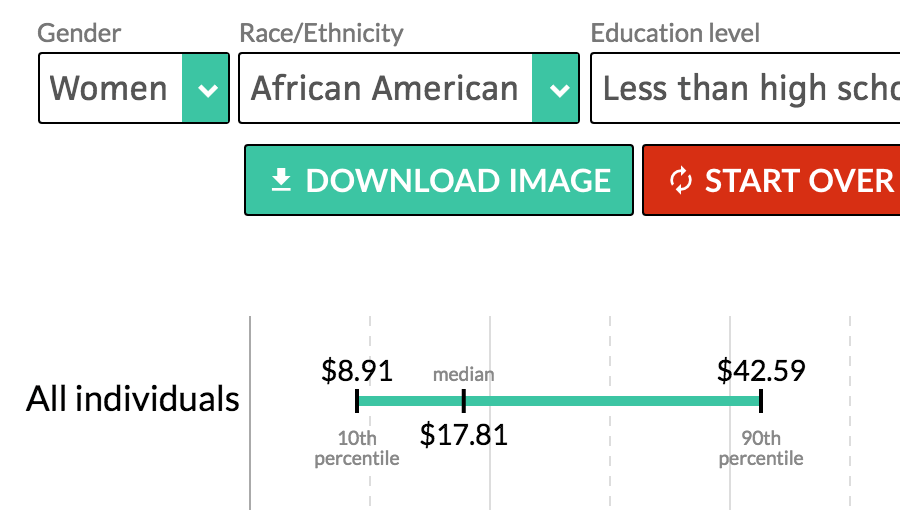Policies to address racial and gender pay discrimination and boost worker power
Overview
The U.S. labor market can be daunting to navigate, and especially so in recent months, as the coronavirus pandemic and recession have created a public health crisis and fueled business closures and mass job layoffs—both temporary and permanent—across the country. This is especially the case Black and Latinx workers and women, who are being hit especially hard by the coronavirus recession that is compounding existing disproportionalities in the U.S. labor market. Even in normal times, there are obstacles that restrict and prevent workers from finding well-paying, interesting jobs or moving from one job to the next, including, for example, racial disparities in access to wealth building as a result of centuries-long discrimination.
The common framework for explaining these racial and gender wage gaps is the human capital model, which says wages are set by productivity levels, and thus, differences in wages must be explained by differences in productivity, which is shaped by a worker’s educational achievement and skills levels. The model does not match the evidence, however, and so to address its deficiencies and provide a better explanation for these wage disparities along racial and gender lines, this report presents a new theoretical labor market model that matches the empirical evidence.
This new model shows that characteristics specific to race and gender, such as the lower levels of wealth in Black and Latinx households and increased household responsibilities for women, make workers of color and women more susceptible to exploitation by employers, with Black women and Latina workers facing both race and gender penalties and thus being exploited even further. This new model also shows that government support for workers to act collectively boosts worker power, reducing employers’ monopsony power—their ability to set and lower wages—and thus decreasing worker exploitation and wage differences that replicate discriminatory biases against these groups of workers.
Download File
Wage discrimination and the exploitation of workers in the U.S. labor market
Key Takeaways
- The human capital model of wage determination is insufficient to explain persistent wage inequality by race, ethnicity and gender.
- Personal wealth impacts how workers search for jobs, since temporary losses of income in between jobs are more manageable with higher wealth levels. In turn, this means workers from demographic backgrounds with historical wealth disparities, particularly Black workers, face more constrains searching for jobs.
- Due to disproportionate burdens for unpaid caretaking within families, women workers also face more narrow job-search possibilities as they balance employment with care responsibilities.
- Constrained job search gives employers the ability to undercut workers’ wages, since workers have fewer suitable job options that would give them more bargaining power to demand higher pay.
- Institutions that promote worker power and collective action, such as labor unions and labor law enforcement, push back against employers’ wage-setting power and help ensure that workers receive the value they contribute to the economy.
Related
Explore the Equitable Growth network of experts around the country and get answers to today's most pressing questions!







